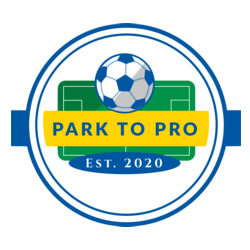For the duration of the game, the management team and substitutes occupy their bench/technical area viewing their team performance. In some incidences, you may also have members of your staff watching from the stand and feeding back what they’re viewing.
Whilst the game is being played, hundreds of things are taking place every second, with the clock passing by, until eventually the final whistle goes. We all know that, at the end of the game there will be a winner and a loser, or in some cases, it’ll end up in a draw.
Regardless of the result, the evaluation process should give you an opportunity to analyse (more effective if you have a camera) a number of ‘football problems’, that have been identified. While a victory can be bitter sweet, there is always an area to improve your team.
To define, a football problem would be something that is a threat to the team intention, by not being executed effectively.
The team intention could be to exploit the space behind the back line of the opposition, but a certain player was unable to execute the pass the team needed. This would then need correcting, in order for the team intention to be a success.
When observing your team from the touchline, you could have a checklist to identify potential football problems, but firstly;
> Can you SEE the potential problem, or are you just ‘LOOKING’ at the field of play?
> Does your team have intentions that are clearly outlined? Do your players know these?
> Is there a pattern of behaviour that a respective player displays, that could point to a problem? Or, is it just a ‘one off’ occurrence?
> How much impact are the opposition having on your proposed team intentions?
I’m sure we’ve all experienced some form of a loss, on more than one occasion. After a loss, did you reflect and come to some sort of evaluation on why it could’ve happened? Whilst it’s tempting to fall into the trap of, ‘all you see, is all there is’ and blaming an individual mistake (for example), there could be a ‘bigger’ problem taking place and not that of just a ‘mis-placed pass’.
In preparation for game situations, your players should know what they are expected to do within the team intention (communication). You then want the individual intention (deciding what) aligned, followed by them correctly doing it (deciding how/execution of decision).
The potential problem with the above sequence though, is that you can only see the execution of a player and not what is going on in their brain beforehand. So, when that ‘mis-placed pass’ is executed, could the problem have been a little deeper and not that of just technique.
> Could the team intentions be confusing, not clear enough or not possible to execute?
> Does the player understand the individual intention that’s needed to accomplish the team intention?
> Did they opt for the wrong decision (how they would execute it)?
From looking at the above, you can see that initially there could be a problem, in that the team intention could be wrong. This problem then accumulates and ‘snowballs’ into something much larger, which could point as to why the error occurred. Who’s responsibility is it for defining the team intentions? Yes, the coach.
So, next time there is an error executed during a game, it’s important that the coach/manager reflects on this and evaluates as to why it could’ve happened? This problem can then be noted and (hopefully) corrected properly on the training ground.
Next time you’re present at a game, zoom out and look at the whole scenario (team), not just that of a player (zooming in)!

